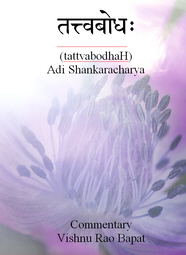*** Go to Part 3 *** *** Go to Part 1 ***
Q: <<<
**Source: *Talks on 108 Selected Verses of Vivekacūḍāmaṇi* (Verse 19)**
**Exact Quote (from published transcript):**
> *”Avidyā is not a substance. It is adhyāsa—superimposition. Like darkness in a room is only absence of light, ignorance is absence of knowledge (jñānābhāva). It is anirvacanīya—you can’t say it exists or doesn’t exist.”*
**Verification:**
– Available in *Vivekacūḍāmaṇi: 108 Selected Verses* (Arsha Vidya, 2012), **p. 32**.
>>>
Page 32 of First edition of that book is commentary on Verse 6. Verse 19 is commented on from p. 41 – 43. It is about viveka and vairāgya – no mention of avidyā.
Continue reading
